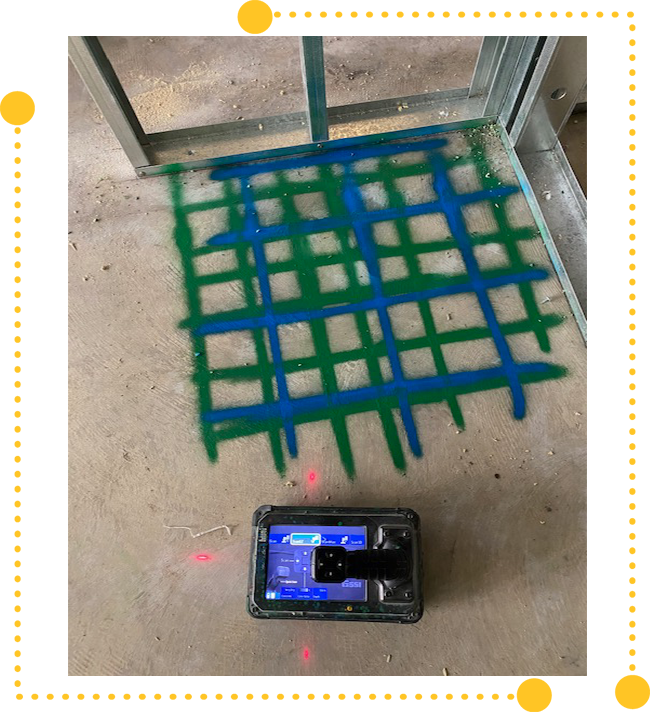Concrete Scanning: An Important Step In The Direction Of Ensuring Structural Honesty and Security
In the realm of building and construction and infrastructure maintenance, the value of concrete scanning can not be overstated. By utilizing innovative innovation and methodologies, concrete scanning serves as an essential tool in guaranteeing that the integrity and security of buildings and bridges are promoted to the highest possible requirements.
Relevance of Concrete Scanning
Concrete scanning plays an important role in making certain the architectural honesty and safety and security of structures and infrastructure jobs. By utilizing sophisticated technologies such as ground-penetrating radar (GPR) and electromagnetic induction, experts can non-destructively evaluate concrete structures to spot prospective defects, voids, ingrained items, and support format. This procedure allows very early discovery of abnormalities that might compromise the security of a framework, stopping pricey problems and making sure the safety and security of occupants.
Prior to exploration, reducing, or coring right into concrete, scanning aids determine the accurate areas of rebar, post-tension cable televisions, and other embedded elements, lowering the threat of unintended hits that could lead to architectural weaknesses. In addition, concrete scanning help in high quality control by verifying the thickness of concrete covers and detecting any type of inconsistencies that might impact the total toughness of the structure.
Modern Technology for Concrete Assessment

Advantages of Early Discovery
Prompt discovery of structural issues can dramatically reduce threats and make sure the longevity of building tasks. By recognizing potential issues early in the building procedure, stakeholders can take aggressive procedures to attend to problems prior to they escalate into larger and a lot more expensive problems. Among the essential advantages of early discovery is the avoidance of architectural failures, which can present major safety hazards and result in job delays and economic losses.
In addition, very early detection permits prompt fixings and upkeep, which can assist expand the lifespan of the framework. By addressing concerns immediately, building and construction groups can stay clear of expensive repair work and even the demand for premature substitute of structural parts. This aggressive approach not only conserves money and time but likewise boosts the overall safety and longevity of the construction task.
In addition, very early discovery can boost task preparation and decision-making by supplying stakeholders with useful insights into the problem of the structure. Armed with this information, task supervisors can make educated selections relating to construction timelines, techniques, and materials, resulting in much more reliable and effective project outcomes.
Ensuring Structural Stability
Ensuring the architectural stability of a construction task is vital to its safety and security and longevity. Architectural security describes the ability of a structure or infrastructure to maintain its form and feature under environmental problems and numerous tons. To attain this, extensive assessment and surveillance of the framework are necessary. Concrete scanning plays an essential function in making certain structural security by identifying prospective problems such as spaces, delamination, or reinforcement rust that can endanger the stability of the structure gradually.
By using advanced scanning technologies like ground-penetrating radar (GPR) and electro-magnetic induction, building and construction experts can non-invasively examine concrete frameworks to Source recognize areas of concern under the surface area. This proactive approach permits the early discovery of weak points or flaws, enabling punctual repairs or reinforcement to protect against structural failings.
Regular concrete scanning throughout different construction stages and throughout the life cycle of a framework can help keep its stability, minimize dangers, and ensure the security of passengers. By prioritizing architectural stability with concrete scanning, construction tasks can enhance their strength and sturdiness, inevitably contributing to better security and long life.
Preventing Essential Failures
Carrying out regular examinations, such as concrete scanning, can disclose surprise issues like gaps, splits, or deterioration that can compromise the integrity navigate to this site of a structure. By making use of innovative scanning technologies like Ground Passing through Radar (GPR) or Concrete X-ray, designers can non-destructively assess the condition of concrete and identify weak points that call for support or repair service.
Final Thought
To conclude, concrete scanning plays an important function in making certain structural integrity and security by making use of innovative modern technology for very early detection of potential issues. This proactive approach helps protect against essential failings and makes sure the stability of structures. It is necessary to focus on concrete assessment as a conventional method to protect the long life and security of buildings and framework.
Concrete scanning plays a critical function in guaranteeing the architectural stability and safety of structures and facilities projects. In addition, concrete scanning aids in top quality control by confirming the thickness of concrete covers and finding any type of disparities that may influence the general resilience of the framework. Concrete scanning plays a critical role in making certain structural security by discovering potential problems such as gaps, delamination, or reinforcement deterioration that could jeopardize the integrity of the structure over time.

In verdict, concrete scanning plays an essential duty in making certain architectural stability and safety by utilizing innovative modern technology for very early detection of potential concerns.